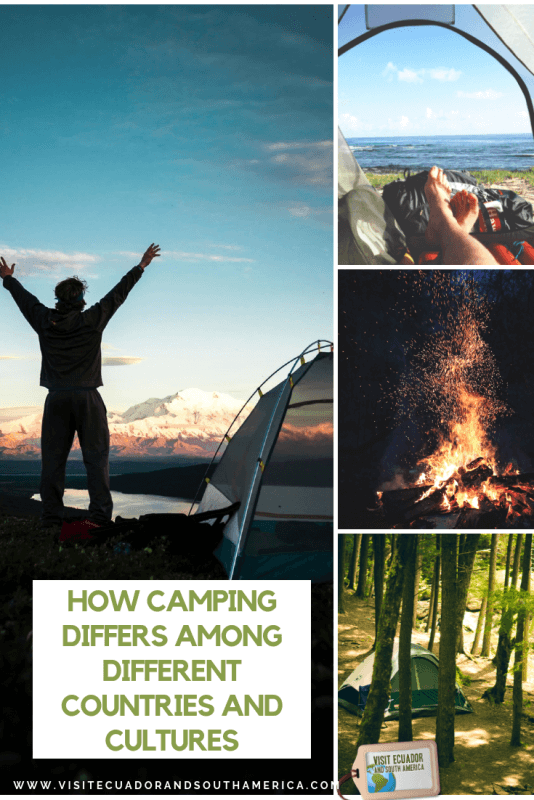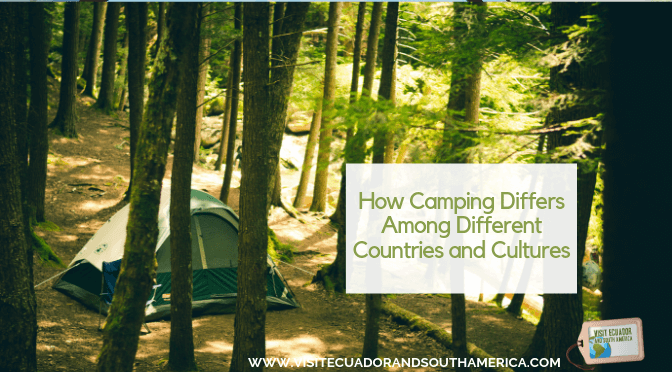How Camping Differs Among Different Countries and Cultures
Written by Elisa Williams
Have you ever wondered whether there are other cultures and countries that love to camp as much as you do? Well, there are several of them in the world, and they all have unique camping lifestyles. Camping is an art form that is popular all over the world. Many cultures consider camping a part of their identity.
This article will look at the different cultures and countries of the world that camp, and focus on what makes them unique. Here is a look at how camping differs among different countries and cultures.
New Zealand
There are so many amazing places to camp in New Zealand. Most New Zealanders are addicted to the outdoors, and staying in a hotel on their trips is an idea that will never cross the minds of many of them. There are over 250 campgrounds and over 400 holiday parks all over New Zealand. Considering that the entire country is barely the size of Colorado, there are a lot of camping areas. Camping is a big deal in New Zealand and a huge part of their culture. November to February are the summer months in New Zealand, and therefore the prime camping months. All campgrounds are packed to capacity during this period.
Thailand
Camping is very popular in Thailand, especially in the regions of Northern Thailand around Chiang Mai. The entire theme of camping is romanticized and has even been rebranded. It is not uncommon to see Thai men roasting marshmallows in street fairs or sleeping in hammocks in public spaces. On the slopes of the mountain of Mon Cham, hundreds of tents are pitched every day. Visitors enjoy exotic views and great weather. There are also cabins available for rent for people who prefer not to stay in the tents.
Germany
Germany is famous for beer and heavy machinery. They are also low-key famous for great camping experiences. Germans love camping. Their camping traditions involve bringing the entire extended family with you when you go camping and having as much fun together as possible. Which is why Germans camping tends to be loud and filled with beer-induced laughter and songs, fun and games for the entire family. You can meet many great people in Germany; actually, when I traveled in Germany for the first time, there was a couple which gave me a free walking tour in Berlin and then they offered to go camping the the wildst of Germany – which was a great experience.
Germans also get ridiculously over prepared for their camping excursions. They will pack their camping vehicles necessary camping gear such as multiple tents, just in case they lose one or the other, multiple stoves and blankets and water tanks and beds and food and anything else you can think of. They can basically comfortably survive a zombie apocalypse on nothing but what they bring with them camping. Also, many Germans love exploring new campgrounds. Their adventure spirits will often take them even beyond their own borders to France and Italy.
Australia
Australians love camping. They call their camping style “makeshift” camping. Ultra lightweight and minimalist, they simply crawl up in their sleeping bags and spend the night in the bed of their trucks which is why many Australian tentmakers design tents that are specially built to be set up in truck beds. Camping in truck beds also serves another purpose in Australia: being raised off the ground at night is a very good idea if you are living in a country that is full of animals and insect that are constantly trying to kill you. Rattlesnakes, scorpions and fire ants are just some of the examples of all the animals you will definitely encounter when camping in Australia.
Netherlands
Dutch people enjoy camping almost as much as their German counterparts. When you Google Stuff Dutch People Like, camping comes up at number 25. Summers are famous for long caravans that block roads and cause traffic jams, all packed full of families heading out to all the popular camping grounds. They too, love to be over-prepared, bringing not just simple camping gear, but also tons of food and extra everything. However, Dutch people tend to be fiercely loyal to their campgrounds, and most of them will spend their entire vacation camped on one single campground.
Mongolia
In Mongolia, there is a famous ger camping tradition. These people camp because it is their way of life, and not for recreation. They are nomadic and travel from place to place in the desert in search of water. The door of the circular tents usually faces south for internal climate control. Additionally, the tents can be elaborate, complete with shrines and guest areas.
Arab Nations
In the Middle East camping is a popular activity, but never in the summer. Desert summers are prohibitively hot to camp in. During winter, Arabs pack everything they own and head to the desert to camp in style and glamour. They set up family camps with tents arranged in a circle around a central larger communal tent. These camps often have kitchens and even toilets, making for a comfortable living experience for the entire family.
If you found this page helpful, I would appreciate it if you would pin, share or tweet it on any social media platforms you use! Every little bit will help fund our travels and continue to bring great content to our site!
Planning a trip soon? Comment below or send me an email, I can help you plan your trip.
PIN IT FOR LATER

If you want more in-depth information and also a guide that you can bring along during your trip, I recommend the travel guide Lonely Planet Ecuador & the Galapagos Islands. This is a great source of information and tips, maps and all you need if you plan on visiting Ecuador. I personally like the option of having a hard copy version where I can take notes and have at hand.
Don´t just dream it, make it happen. Plan your South American trip with a local!
Take a look at this list of travel resources to plan your trip and travel in South America. Daydreaming about your trip to South America? Order here your Free Ebook, I share with you some useful tips & resources for a memorable trip! I invite you to follow me on Facebook, Twitter, Pinterest, and Instagram. In addition, you can subscribe on YouTube. You can also send an email to get help planning your trip: info(at) visitecuadorandsouthamerica(dot)com



